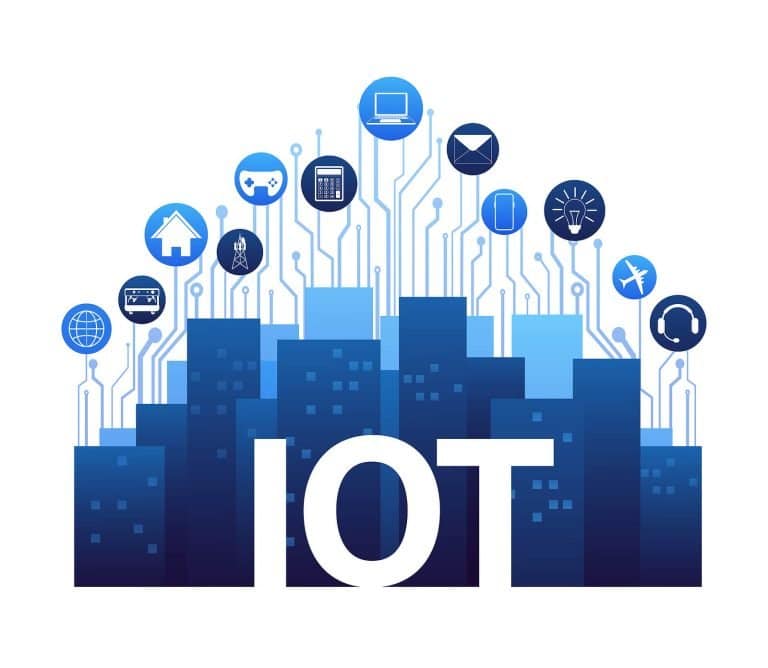The Internet of Things or IoT is now one of the principal drivers of digital transformation, enabling organizations to reinvent existing products or create new offerings, services, internal operations, and business models. But getting a handle on this still-evolving technology and deploying it effectively can pose serious challenges. That’s where IoT solutions and IoT services can provide both resources and clarity.
Table of Contents
ToggleWhat are IoT Solutions?
An IoT solution is a seamlessly integrated bundle of IoT technologies that enables an organization to solve a problem and/or create business value. IoT solutions help deploy and manage the various and disparate parts of IoT, such as devices, sensors, security, networks, and platforms.
IoT solutions allow their users to easily take advantage of the benefits of IoT as a robust, secure, and powerful grid of connected devices, buildings, and infrastructure. With access to data that comprehensive IoT solutions provide, organizations can gain insights into operational efficiencies and new revenue sources. They can also benefit from enhanced communications between devices and employees.
As IoT devices and technologies develop and mature, companies are taking advantage of IoT solutions offering real-time operating systems, low-power devices, and embedded security features. There are IoT solutions for technology, device management, and security.
Putting IoT Solutions into Context
In 2014 when the Internet of Things was at the peak of its hype cycle, venture capitalists were investing heavily in IoT start-ups, most of which concentrated on specific aspects of the technology, such as individual sensors, network protocols, or software platforms. Because of the time, effort, and human resources required to tie such disparate elements together, there was little attempt on the part of these start-up companies to integrate the various aspects of an IoT ecosystem. Consequently, many failed to generate the kinds of investment returns that venture capital funding was looking for.
Fast forward to the present, and the Holy Grail for investors in IoT is the standardization and packaging of IoT components with an easy-to-use interface and deployment model. This approach to IoT holds the promise of mass adoption, and the potential for vendors and providers in the IoT space to concentrate on modularized its technology components.

Packaging IoT technology into a seamlessly integrated bundle or solution does two things:
1. It gives organizational administrators a simplified vehicle for understanding the technology. A “package deal” that explains and delivers all the relevant components offers a more transparent view of the value that a solution is offering.
2. It creates an easier path for organizations to purchase or invest in the technology, reducing the risk and complexity of dealing with multiple vendors and contracts.
Using an IoT Solution to Solve a Problem
As an example of an IoT solution’s problem-solving capabilities, consider the case of an automotive dealership, which traditionally employed people to personally scan the location and condition of every vehicle on the lot. With hundreds or even thousands of cars to deal with, this will have been a time, money, and labor-intensive effort.
With IoT trackers on each vehicle logging their GPS data and automatically displaying their positions on a centralized map, the problem of vehicle asset tracking becomes simpler and cheaper, and frees up labor for other purposes.
Using an IoT Solution to Create Business Value
Extending the vehicle asset tracking example, an IoT solution with real-time location information would enable the auto dealership to track cars at various stages (mechanics workshop, in transit, etc.), and identify areas where operational efficiency could be improved. Data collected from IoT sensors could enable management to automatically optimize routing when moving vehicles around, and trigger alerts if a vehicle is moved without authorization. The solution platform could even provide a web app for the dealership’s customers, helping them find cars independently.
What are IoT Services?
IoT services aim at helping organizations solve their business challenges and tap into new revenue streams via IoT technology. They include strategic consulting, development, data analytics, and application management. The services provide reliable and cost-effective ways for organizations to launch new IoT initiatives or to scale and manage the evolution of an existing IoT application.
IoT Consulting Services
Strategic consulting services for IoT should provide a full range of consultations, including:
- Strategic planning and the development of business cases.
- Selecting components of the IoT technology stack.
- Design of IoT network architecture.
- Formulation of an IoT cybersecurity strategy.
IoT Development Services
IoT development services support organizations in their IoT development initiatives at a number of levels, including:
- Firmware engineering.
- The design and engineering of data warehouses.
- Implementing data analytics.
- Development of custom web and mobile applications, including dashboards and visualization.
- Network engineering and implementation.
- Security testing for devices and networks.
- The design and provisioning of Application Programming Interfaces (APIs).
- The launch and monitoring of applications throughout their life cycle.
IoT Analytics Services
IoT analytics services should help organizations in extracting actionable insights from IoT data. This may be accomplished on two levels:
- By offering the development and implementation of comprehensive IoT analytics solutions, which cover the full cycle from needs analysis to solution launch and management.
- By offering IoT analytics as a service based on a subscription model with a web-based access interface, rather than an in-house analytics solution.
IoT Application Management Services
IoT application management services are structured to give organizations continuous value from their IoT application deployments. This approach may typically include:
- Technical support and troubleshooting via service desk, data integrity, and issue management. This allows data quality, application availability, and usage issues to be quickly identified.
- Cloud management, with monitoring and optimization of cloud resources consumption, and the configuration of scaling policies and the client’s choice of cloud instances and storage classes.
- Security management, with an assessment of application vulnerability on networks, servers, and databases, which may include penetration testing. Prevention and mitigation services should be available for common network risks such as Distributed Denial of Service (DDoS) and Advanced Persistent Threats (APT).
- Regulatory compliance management, with continuous monitoring, infrastructure compliance reviews, and reporting.
Evolution management for IoT solutions, with application updates and infrastructure expansions to support changing business needs
Summary:
IoT Solutions & Service Provider
An IoT solution is a seamlessly integrated bundle of IoT technologies that enables an organization to solve a problem and/or create business value. IoT solutions help deploy and manage the various and disparate parts of IoT, such as devices, sensors, security, networks, and platforms. As an example of an IoT solution’s problem-solving capabilities, consider the case of an automotive dealership, which traditionally employed people to personally scan the location and condition of every vehicle on the lot. With IoT trackers on each vehicle logging their GPS data and automatically displaying their positions on a centralized map, the problem of vehicle asset tracking becomes simpler and cheaper, and frees up labor for other purposes.





